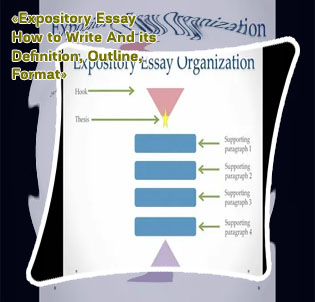- Home
- Order
- Price
- Samples

Expository paragraph definition

Understanding the concept of an expository paragraph is crucial for effective writing. In order to grasp the definition and purpose of this type of paragraph, it is important to explore different perspectives and examples. The following articles provide valuable insights and explanations that will help clarify the definition of an expository paragraph:
Demystifying the Expository Paragraph: A Comprehensive Guide
"Demystifying the Expository Paragraph: A Comprehensive Guide" is an essential resource for anyone looking to improve their writing skills, particularly when it comes to crafting clear and effective expository paragraphs. Written in a clear and concise manner, this guide breaks down the elements of an expository paragraph, providing readers with a step-by-step approach to mastering this important skill.
One of the key strengths of this guide is its comprehensive coverage of the topic. From understanding the purpose of an expository paragraph to learning how to structure one effectively, this guide leaves no stone unturned. Additionally, the inclusion of practical examples and exercises helps to reinforce the concepts discussed, making it easier for readers to apply what they have learned in their own writing.
One aspect that could be further explored in this guide is the use of transitions within expository paragraphs. While the guide does touch on this topic, a more in-depth discussion on how transitions can enhance the flow and coherence of a paragraph would be beneficial.
Overall, "Demystifying the Expository Paragraph: A Comprehensive Guide" is a valuable resource for writers of all levels looking to enhance their expository writing skills. By following the guidance provided in this guide, writers can improve the clarity and effectiveness of their writing, ultimately leading to more engaging and impactful
Mastering the Art of Expository Writing: Tips for Crafting Effective Paragraphs
"Mastering the Art of Expository Writing: Tips for Crafting Effective Paragraphs" is a comprehensive guide that provides valuable insights and practical tips for improving writing skills. The book is written in a clear and concise manner, making it easy for readers to understand and implement the strategies discussed.
One of the key takeaways from the book is the importance of structure in writing. The author emphasizes the need for logical organization and coherence in paragraphs, which helps to convey ideas effectively to the reader. By following the tips provided in the book, writers can learn how to construct well-organized paragraphs that flow smoothly and engage the audience.
In addition to discussing the importance of structure, the book also covers other essential aspects of expository writing, such as clarity, coherence, and conciseness. These principles are crucial for creating impactful and persuasive writing that resonates with readers.
One practical use case of applying the tips from the book is in a business setting. By mastering the art of expository writing, professionals can effectively communicate their ideas, proposals, and reports to colleagues and clients. This can lead to increased understanding, improved decision-making, and ultimately, positive outcomes for the business.
- Personal reflection essay
- Essay hook examples
- Personal essay for scholarship
- Good introductions for argumentative essays
- Compare and contrast essay example
- Good ways to start an essay
- Descriptive essay about your favorite place
- Examples of thesis statements for argumentative essays
- Analytical essay
- Personal statement essay examples
- Narrative descriptive essay example
- Essay editor
- 1000 word essay
- Coursework writing service
- Leadership essay
- Website that pays you to write
- Best essay writing service
- Example of expository essay outline
- Write my philosophy essay
- Process analysis essay
- Write an argumentative essay
- Body of an essay
- Descriptive essay about technology
- Reflective essay introduction example
- Write my paper
- 500 word essay
- Help with writing a paper
- Essay writing websites
- Buy essay
- Chegg essay
- Essay about using mobile phone
- Personal essay
- Writing a history essay
- Rhetorical analysis essay
- Writing a essay
- Write research paper service
- Good hooks for research essays
- Essay about volunteer work
- Writing a scholarship essay
- Mit essays
- Descriptive essay example about a place
- Introduction for persuasive essay
- Critique essay
- Essays for sale
- Persuasive essay topics
- Free compare and contrast essay examples
- A essay example
- Interesting topics for persuasive essays
- Expository essay
- How to make an essay longer
- Essay writer
- Are apa papers double spaced
- Format of essay writing
- A persuasive essay
